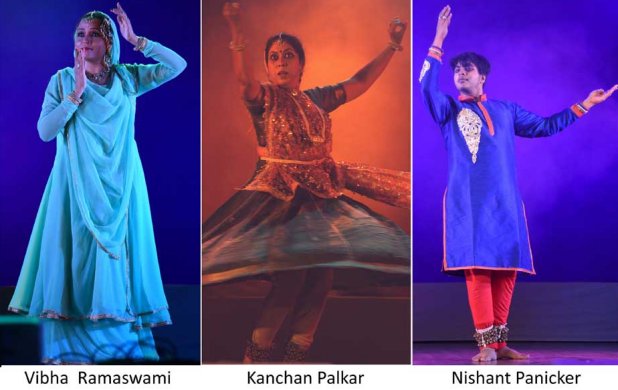
|   |

|   |
Connecting with Kathak in Bangalore - Anand Sirur e-mail: apsirur@gmail.com July 22, 2017 Ram Gopal, the dance legend from Bangalore, called 'Nijinsky of India' may be credited as having introduced the Kathak dance form in Bangalore in the early 1930s. A student of Jailal and Sohanlal, he started a dance school in Bangalore along with Sohanlal. On an invitation, he travelled to Paris accompanied by Sohanlal for a series of dance performances. Later, Sohanlal parted ways with Ram Gopal and started his own dance school in Malleswaram in Bangalore. However, it was Dr. Maya Rao who laid a firm and enduring foundation for Kathak in Bangalore, when she started her dance school, Natya School of Kathak and Choreography in 1987. Kathak at that time was in its nascent stage and she was apprehensive whether it would be accepted, continued and sustained by young dancers in Bangalore, a place where, Bharatanatyam held the centre stage and was the more popular style. Her concerns may have been misplaced because Kathak has caught the imagination of a very large number of aspiring dancers and Kathak dance schools have taken a quantum jump, with a number of them mushrooming in every corner of Bangalore. Today, Bangalore boasts of quite a few well established dance schools for Kathak, KathaKonnect being one of the better known schools that was established in 2011 by Vibha Ramaswami. Vibha gave up her lucrative software career to pursue her passion and vision for Kathak dance to start KathaKonnect Dance Academy. Her annual Kathak festival, 'Connecting with Kathak' was held on July 9th at ADA Rangamandira in Bangalore, incidentally on the very auspicious day of Guru Poornima.  It was a function to showcase skills of the students of different age groups, 6 to 50+ of the Academy. Over 50 students of the Academy performed Kathak pieces in Lucknow Gharana style. The programme commenced in the first part with the younger group performing the traditional invocation of Lord Ganesh, Vakra Tunda and later various compositions in teen taal, vilambit, madhya laya and drut laya, abhinaya items, taranas and concluded with a rendering in Ashtamangal Taal. The piece de resistance however, was 'Sufi-Chaap Tilak' the Sufi Qawwali Chap tilak sab leeni, a composition by the legendary Sufi mystique and musicologist of the 14th century, Amir Khusro who left his indelible footprint on Indian music, choreographed and performed by Vibha Ramaswami. The second part was an innovative Ritu-Kimshukam describing the grandeur of the six ritus or seasons, as perceived by the Kimshuka tree called 'The Flame of the Forest' in English and 'Palaash' in Sanskrit. They portray the transformation of the trees and impact on life during the different seasons, from the wrinkled, drooping and yellowed leaves during Shirish Ritu (winter), to the myriad of rainbows on the drops of rain water, glistening on the vibrant green leaves during Varsha Ritu (rainy season). The Flame of the Forest or Kimshuka is associated with fire - the blazing red flame that burns lovers' hearts; a fierce conflagration in a mountain forest; sacrificial fires for the rites of the festival of love. Noticeable performers of the programme amongst a few others were - Nishant Panicker, a very talented and promising young Kathak artist who is also a Hindustani vocalist of outstanding promise, from the Agra-Atrauli gharana, a student of Lalit Rao, doyenne of the gharana; Kanchan Palkar from Pune, founder of Kalapadma School of Kathak, whose performance, especially in the role of Durga, caught the attention of the audience. Most important were the young artists whose performance reflects the talent, commitment and riyaz to perform with confidence on stage. They hold a great promise to the future of Kathak in Bangalore. Vibha Ramaswami deserves compliments on the exceptional service to the cause of Kathak in Bangalore as a teacher, with her vision, passion and hard work. In all, it reaffirms Pt. Birju Maharaj's view that Bangalore holds a very promising future for Kathak. Anand Sirur's book on music Music and Musicians of Bangalore and Mysore, a rhapsody on all three genres of classical music in India; Carnatic, Hindustani and Western, was released last year. He is currently writing Octave of Indian Classical Dances, a historical narrative of the eight styles. He belongs to a family of dancers and musicians amongst them; Late Kathak Guru Mohan Rao Kallianpurkar, Pt. Dinkar Kaikini, Hindustani vocalist of Agra gharana and tabla player Yogesh Samsi. |